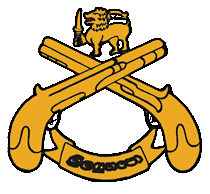This article has multiple issues. Please help improve it or discuss these issues on the talk page . (Learn how and when to remove these messages)
|
| Sri Lanka Corps of Military Police | |
|---|---|
 Crest of the SLCMP | |
| Active | 30 October 1949 - Present |
| Country | |
| Branch | |
| Type | Military Police |
| Role | Policing Provost Counter-intelligence |
| Size | 8 units (156 officers, 3504 servicepersons) |
| Regimental Centre | Polhengoda, Colombo 5 |
| Mottos | Exemplo Ducemus (Latin: By example, shall we lead) |
| Colors | |
| Anniversaries | 1 October (Regimental day) |
| Engagements | Sri Lankan Civil War Insurrection 1987-89 1971 Insurrection Civil war Against Tamil Tigers (1976-2009) |
| Website | alt |
| Commanders | |
| Centre Commandant | Brigadier MMMP Mahesh Kumara |
| Provost Marshal | Major General A M R Abeysinghe |
| Colonel of the Regiment | Maj Gen B G S Fernando |
| Insignia | |
| Flag |  |

The Sri Lanka Corps of Military Police (SLCMP) is the branch of the Sri Lanka Army responsible for the policing of service personnel and providing a military police presence on service property, operations and exercises. It is made up of three regular regiments and with headquartered at Regiment Center Polhengoda, Colombo. Like other military police around the world, they continue to wear white webbing with barrack dress but white gaiters.
Contents
- Missions
- Ceremonial duties
- Policing missions
- Security missions
- History
- Organization
- Notable members
- Order of precedence
- See also
- External links and sources
Policing in the Sri Lankan Army is carried out mainly by SLCMP and by the Regimental Police. The Sri Lanka Navy is policed by the Provost Branch. The Sri Lanka Air Force is policed by the Air Force Police (AFP).